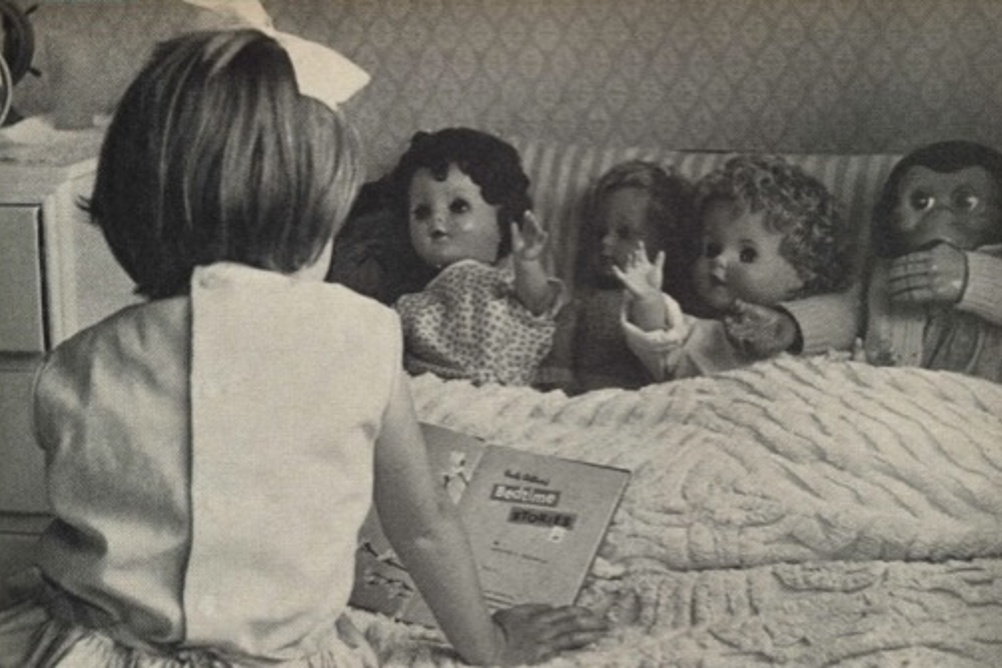
As long ago as 1931, ‘J.H.’ contacted Nursery World's agony aunt, Ursula Wise, with a question about reading. Ursula Wise was the pen name for early years pioneer Susan Isaacs. J.H. wanted to ask her about the ‘Look and Say’ method where children learn to read whole words, unlike modern-day phonics where children learn to link letters and groups of letters with sounds.
J.H. wrote: ‘The fact that my son, before he was two, has begun to recognise words seems to indicate that it is a quick and natural way of learning to read. I understand, however, that it is very new.…’
Wise, a proponent of this approach, replied that the method was far from new and the ‘obvious’ way to learn how to read: ‘It is, indeed, far older than phonic and phonetic methods… in England it could be said to be new again, as there was a period in schools when it was almost completely displaced by various types of synthetic method, i.e. building up either from letters or sounds.’
In contrast, J. Hayden Frank's advice in ‘Do Prepare him for Reading’ (1959) was grounded in phonics. ‘Whenever parents ask me how they can help a child to gain the most from their first months at school, my reply is always the same, I tell them to familiarise him with letters and words.’
Hayden Frank was prescriptive: use a large sheet of paper, coloured chalks or crayons, choose a letter and draw its shape on the page. He emphasised the importance of phonetic sounds: ‘One of the troubles of children at the infant stage is that parents will teach them the alphabet as adults say it. This is quite wrong, because in that form the letters rarely have any relationship to the actual sound they make in reading. “S” for example should be taught as a sibilant, not as “ess.” Similarly, the letter “b” is not “bee.” Teach it as a stammer, “b…b…b…”’
In 1970, Heather Woodman expressed her concern about losing the art of storytelling in ‘When did you last tell a story?’ She wrote: ‘Today too many people omit telling stories and tend to stress the printed word. Obviously, there is a time for reading to children, and this will help the older child with his own reading, but it is important that parents and teachers should be able to tell stories, too’.
Woodman highlighted that storytelling invites participation from the children, so that stories become their own. Interestingly, 55 years later, this is the aim of Interactive Reading where children are encouraged to actively engage with books.
Also in 1970, ‘Mrs E.M.’ sought advice about teaching her three-year-old son to write: ‘He just scribbles and draws circles.’
Mary Turnor's reply is reassuring: ‘The scribbles are the beginnings of writing, so let him draw patterns (these may appear as scribbles to you) to decorate his pictures, and later on encourage him in “up, down” movements, “swing, swing” movements and “bump, bump” movements, and encourage clockwise movements.’

Interview with Roald Dahl in Nursery World
Today, mark-making is widely understood as developmentally appropriate and foundational to writing. Turnor's emphasis on the movement and motor development is reflected in contemporary approaches such as ‘Write from the beginning’.
In 1989, Gillian Teague echoed the tone of Hayden Frank's column, though her emphasis was on handwriting: ‘When the child has left the scribble stage and is able to copy shapes, he is probably ready to write.’
She added that rules should be closely adhered to: ‘I have worked out some simple rules to help the children … I recommend frequent reminders of “the rules”.’
It is no surprise that literacy has been a constant theme in Nursery World throughout its history. Though methods evolve and new research shapes our understanding, the central issues remain largely unchanged.
More than half a century ago, Turnor assured Mrs E.M. with a message that resonates today: ‘Don't expect this to happen all at once; it will take many months.’









